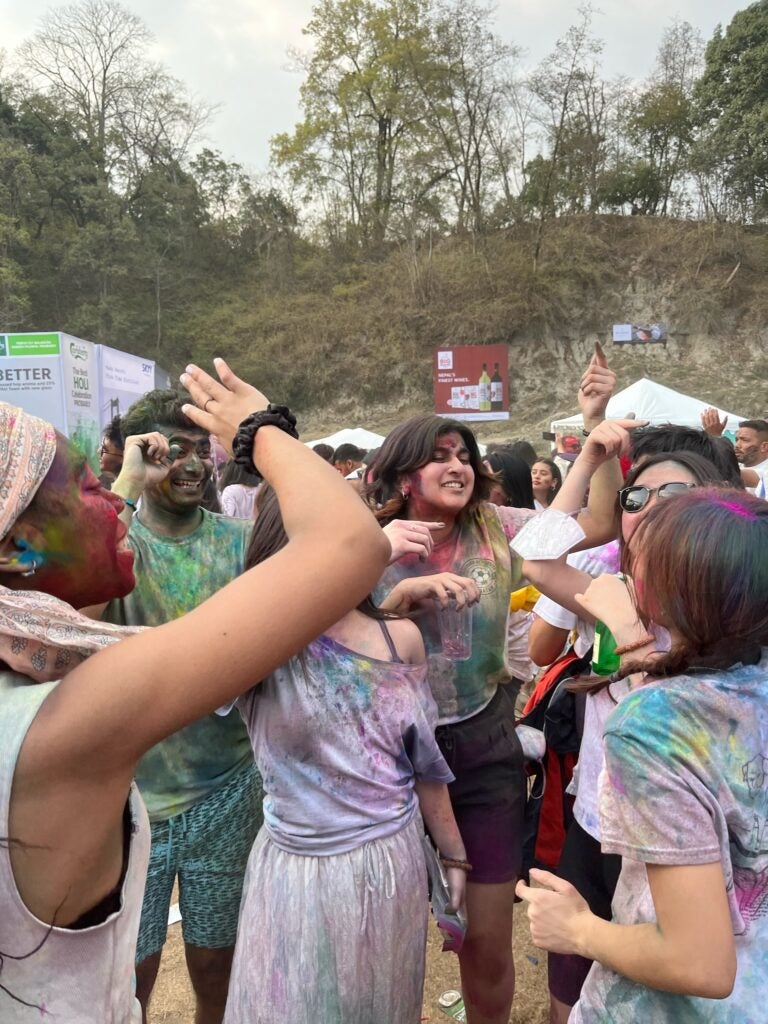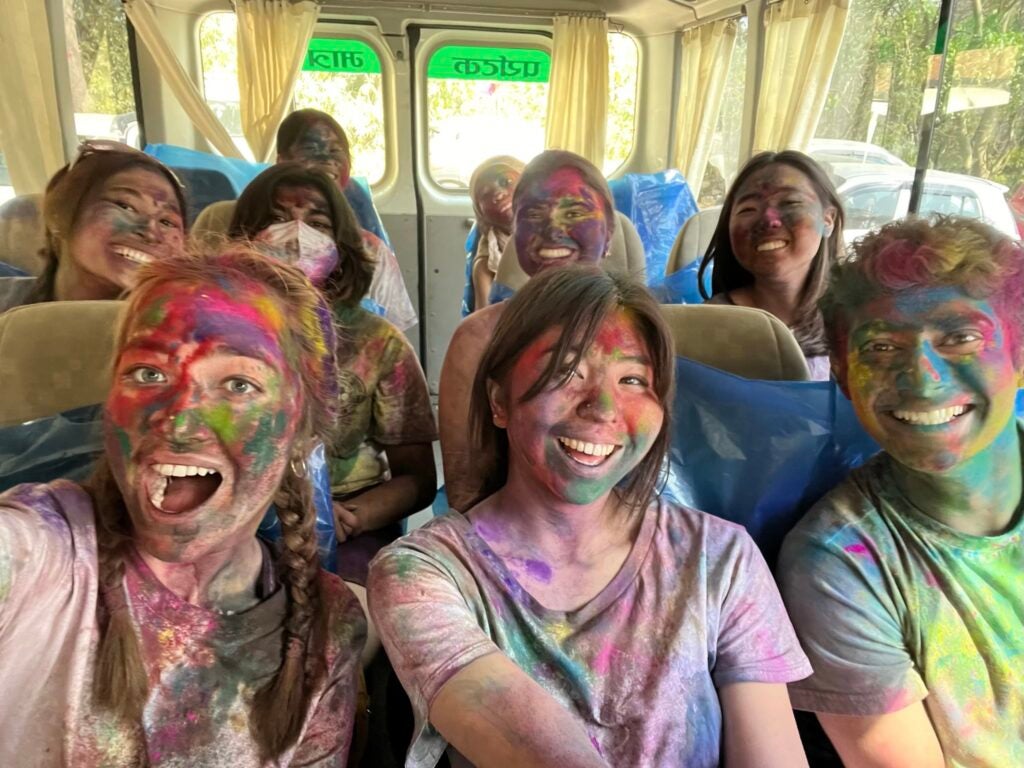Reflection: Understanding Connection During Holi in Kathmandu
By Amelia Benjamin (SFS ’25)
Before taking the course “Lived Pluralism: Lessons from Nepal,” the only thing I knew about Holi was that it was called the festival of colors. I imagined that people celebrated how colorful the world is. However, this was not my experience in Kathmandu. The colored powder was not the focus of the festival but rather a means of connecting with other people.
Less than 48 hours after landing in Nepal, my class and I slowly walked through the city center of Kathmandu. We were unsure of what to expect from what would become one of the most immersive experiences of the whole trip. Almost immediately, we were covered in color. Everyone we passed reached out a friendly hand to swipe powder onto our cheeks. Huge crowds had come out with the sole purpose of sharing many small moments of connection with complete strangers. Powder piled up on our heads and coated our white t-shirts, creating a visible mark representing these moments of connection. We exchanged different colored powders as well as physical touch, eye contact, and wishes of “Happy Holi.”
It was amazing to experience firsthand the traditions we had learned about in class and even better to feel so included and welcomed. Not only could we recognize themes from class, but we also gained a much deeper understanding of pluralism than would be possible in a classroom alone.
 I reflected on whether any traditions familiar to me had connection as their primary focus. At first, I couldn’t think of any. Everything that came to mind seemed to be centered around something else: memory, worship, routine. But the more I thought, the more I realized that many traditions are in fact focused on reflection. For example, Thanksgiving is a time to exchange food and express gratitude for other people, and Christmas is often about giving gifts and spending quality time with loved ones.
I reflected on whether any traditions familiar to me had connection as their primary focus. At first, I couldn’t think of any. Everything that came to mind seemed to be centered around something else: memory, worship, routine. But the more I thought, the more I realized that many traditions are in fact focused on reflection. For example, Thanksgiving is a time to exchange food and express gratitude for other people, and Christmas is often about giving gifts and spending quality time with loved ones.
I remember Christmas 2020 when I wasn’t with my family at all but locked in Covid quarantine alone in Norway. Out of my window, I saw a group of people holding hands around a tree in the courtyard. Even in the dark and cold, they moved in a circle and sang Christmas songs. They were out together with the primary purpose of connecting, and I felt it too.
Few traditions that I am familiar with center connection as Holi does. (I’ve never seen all the streets of DC packed with people for a holiday like I saw in Kathmandu.) Holi felt incredibly special to me because the connections happened simultaneously among the entire community in a public and visible setting. However, it is clear that a desire to connect is not limited to any singular group of people. This desire is reflected in the traditions all people choose to participate in.
On the walk back to the bus after having celebrated Holi for over an hour, I saw a young boy with a water balloon in his hand. He saw me. I recognized the look in his eyes. I jogged ahead and tried to dodge, but he followed. He aimed and hit his target. Even though we didn’t share a language or interact for more than 30 seconds, we connected.
